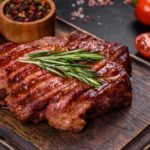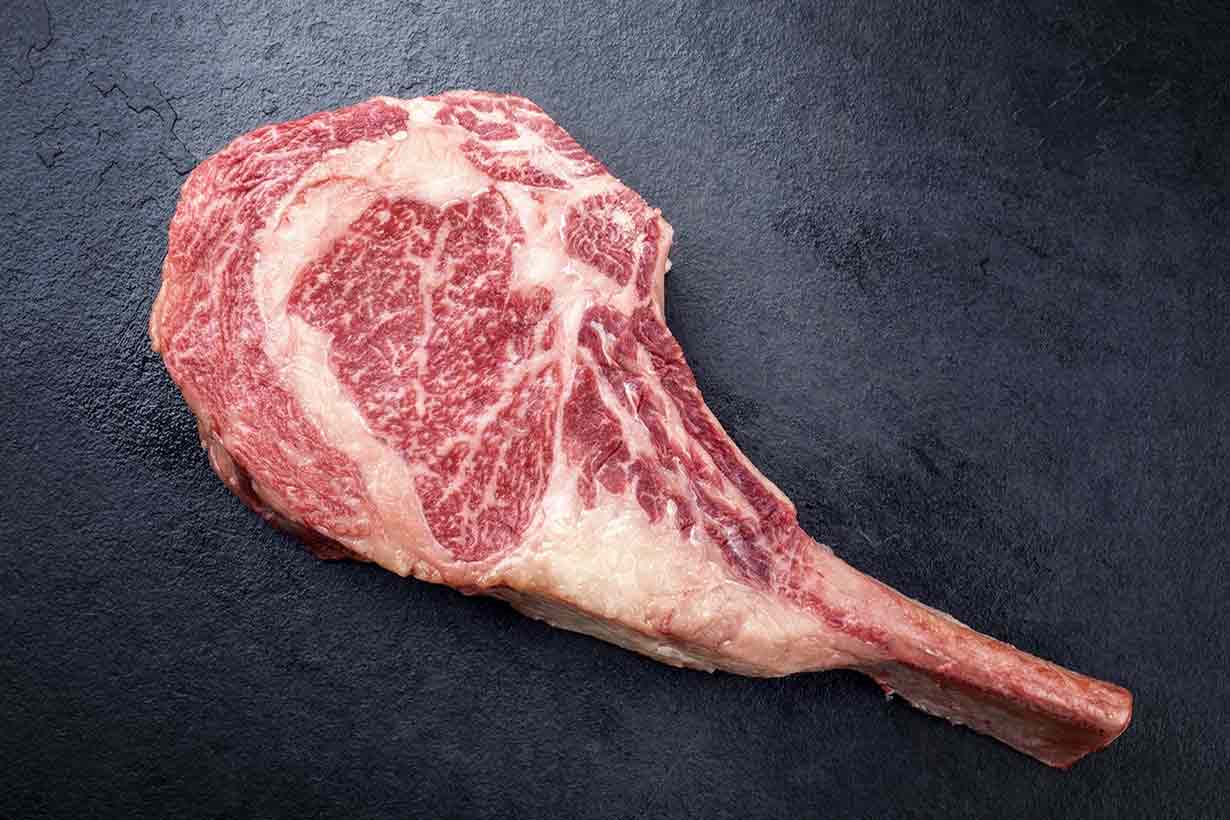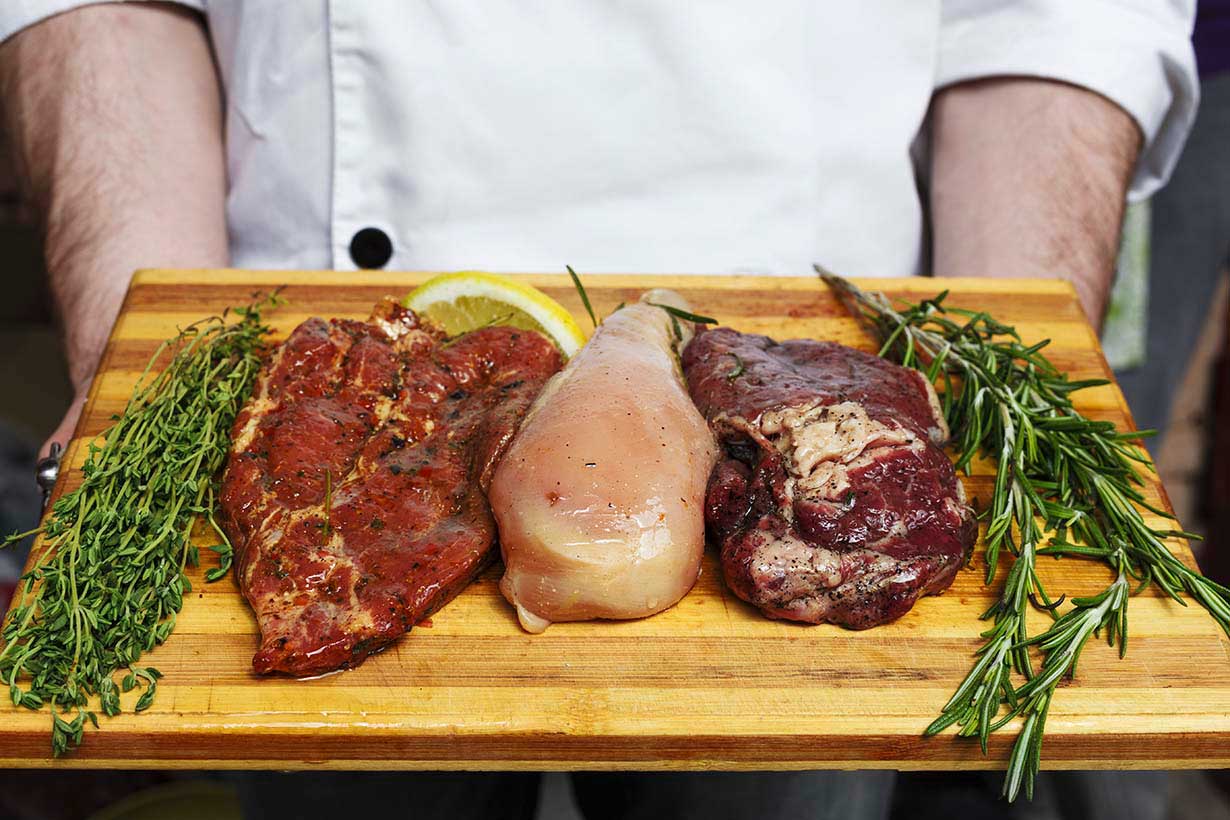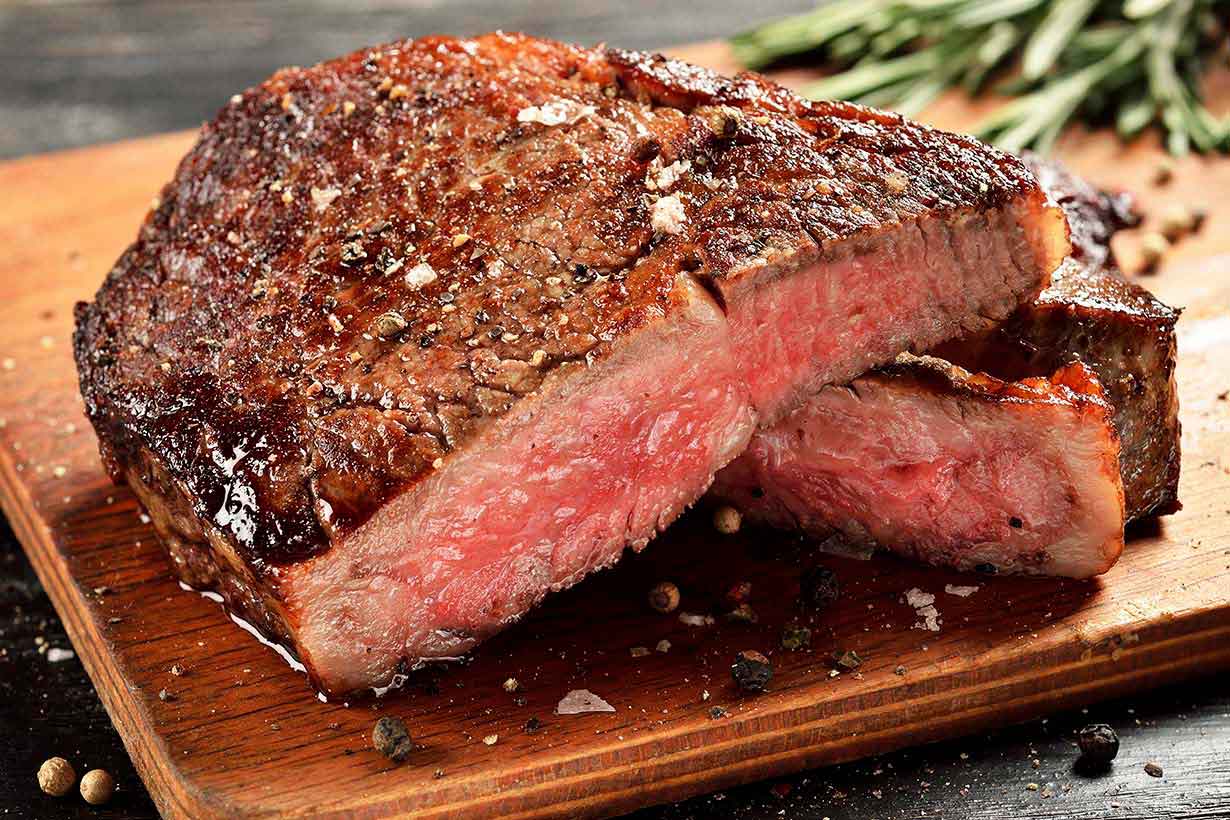Steak is nutrient-rich.
However, steak can be delicious, or it can be disappointing, and this largely depends on how we cook it.
This guide presents ten tips on how to cook steak for a perfect taste – every single time.
1) Choose the Right Cooking Method
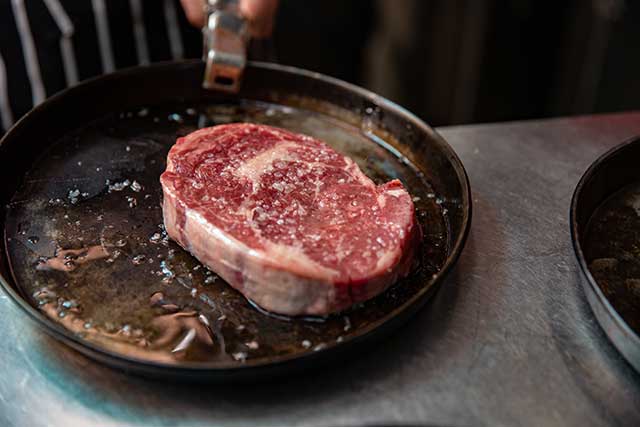
“Steak” is not just one thing, and there are a variety of cuts that all have different characteristics.
As a result, each kind of steak has its own best cooking method.
For instance, braising a ribeye steak in a stew could be tasty, but it would be a monumental waste of premium steak.
On the other hand, it is likely that a quickly pan-seared flank steak would be too tough to be enjoyable.
The Best Cooking Methods For Each Cut
This table shows some of the best cooking methods for common cuts of steak.
Tougher cuts such as chuck and round steak require slower, longer cooking times.
On the other hand, fatty cuts of steak such as ribeye and strip are perfect for pan searing.
| Cut of Steak | Ideal Cooking Method |
| Chuck | Braising |
| Chuck Eye | Broil/Grill/Pan Searing |
| Flank | Grill |
| Ribeye | Grill/Pan Searing |
| Round | Braising |
| Skirt | Grill |
| Strip | Pan Searing |
| Tenderloin | Pan Searing |
| T-Bone/Porterhouse | Grill |
| Top Sirloin | Broil/Grill/Pan Searing |
| Tri-tip (Bottom Sirloin) | Oven Roasting |
2) Get the Doneness Level Right
Generally speaking, steak cooked to a level no further than medium-rare offers the best culinary experience.
However, we all have different preferences, and if your steak isn’t prepared the way you like it, then it’s unlikely it will be as enjoyable as it could be.
The diagram below shows the internal temperature for different “doneness” levels;
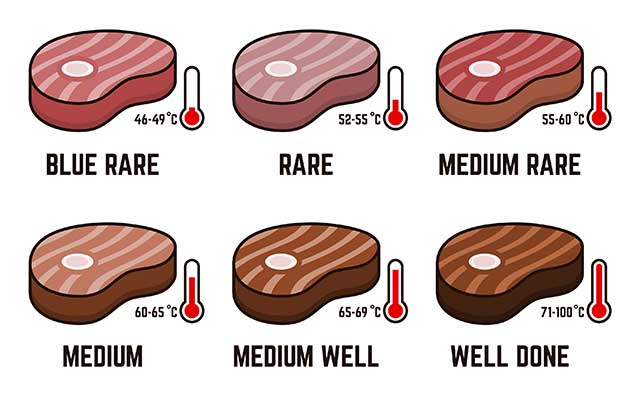
For those unfamiliar with degrees Celsius, here are the equivalent Fahrenheit values;
| Doneness Level | Celsius | Fahrenheit |
| Blue Rare | 46-49°C | 115-120°F |
| Rare | 52-55°C | 125-131°F |
| Medium Rare | 55-60°C | 131-140°F |
| Medium | 60-65°C | 140-149°F |
| Medium Well | 65-69°C | 149-156°F |
| Well Done | 71°C + | 159°F + |
Using a meat thermometer is an easy way to keep track of the internal temperature.
3) Salt and Season Early
Properly seasoning your steak makes a world of difference to the taste.
Firstly, sprinkling a little salt on top of a crusty piece of meat after cooking will impart little additional flavor.
For the best taste; season early.
To do this, give the steak a thick crust of salt and pepper (or any additional seasonings you wish to use) around one to two hours before heating.
The reason for this is that if you salt moments before cooking, the salt will stay on the surface, and some will come off in the pan.
Early salting gives the meat the chance to absorb the salt;
- After salting, the salt will slowly draw liquid from inside the steak to the surface.
- Over 10-15 minutes, this salt will dissolve into the liquid and form a brine.
- Over the next hour or so, the steak will slowly re-absorb this brine, ensuring the steak’s seasoning is throughout. This whole process of drawing the water out of the steak and re-absorbing the brine is known as osmosis.
Finally, pat the surface dry before cooking to ensure there is no excess liquid while cooking.
4) To Flip Or Not To Flip Your Steak
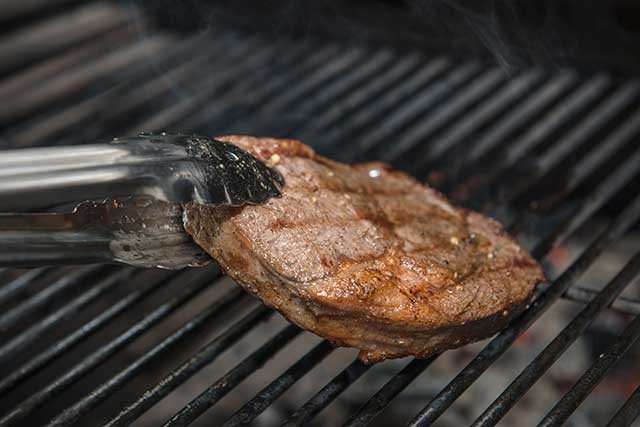
An often debated point is whether you should frequently flip steak or not while it is cooking.
While flipping or not flipping borders on minutiae and won’t adversely affect the flavor, frequently turning the steak can ensure it cooks more evenly.
For example, if we flip the steak once, then one side feels the full heat of the pan while the other remains relatively cool. This situation is particularly true for thick steaks since their upper surface will be further away from the heat.
On the other hand, if we frequently turn the steak, the top half will still be cooking for a few moments after its turn on the surface of the pan, which can ensure a better transfer of heat throughout the steak.
Since the steak remains hot throughout, frequently flipping steak also reduces the overall cooking time.
Some people prefer only to flip their steak once, while others do it frequently.
For me, I find the best results come from flipping once for thinner cuts of steak and every minute or so for the thick cuts.
5) Sit the Steak At Room Temperature Before Cooking
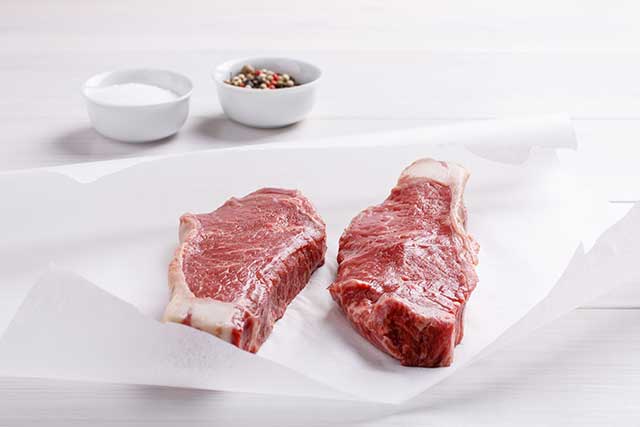
There is a theory that cooking steak at something close to room temperature will ensure it cooks more evenly. However, there is not a lot to prove this assumption.
Another widespread idea is that letting a steak sit out at room temperature will ensure it heats up to the desired cooking heat faster.
While this may be true, even if you expose a cold steak to a sizzling hot skillet, it is not going to be cold for very long.
Although these two theories are not that important, this does not mean sitting your steak out is needless.
In fact, there are two good reasons to sit the steak before cooking;
- Firstly, placing a chilled steak in a hot pan will scorch the surface of the steak and cause it to stick to the pan.
- Secondly, the steak can absorb salt better (quicker) when the meat is warmer.
If cooking meat directly from the refrigerator, seasoning the steak for a longer period (or even overnight) would be ideal.
6) Preheat the Oven or Skillet
Firstly, if you are using a cast-iron skillet, then it is important to preheat the pan before cooking.
The reason for this is because cast iron is poor at conducting heat, so the skillet will only get hot directly above the flame at first.
In other words; your cast iron skillet will heat unevenly, and this will also mean different parts of your steak will cook before others.
To prevent this, heat the skillet for around 10 minutes before cooking to ensure it evenly heats.
Add a bit of your chosen oil or butter, and then put your steak in there.
While preheating an oven or grill is not as important, it still means that the steak will cook at the correct temperature from the start.
It will be quicker too.
7) Try Reverse Searing Your Steak
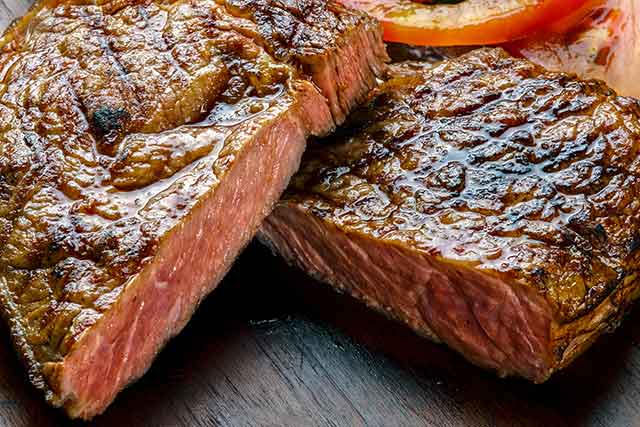
The reverse sear is a great way to cook thick, fatty cuts of steak such as the ribeye or tenderloin.
One of the great things about this method is that it ensures no part of the steak is overcooked.
By slow cooking the steak in the oven to the desired temperature, the center of the steak is soft and tender, while the surface is crispy from a quick sear.
Method
To reverse sear your steak to medium-rare level, try the following steps;
- First, liberally season all sides of the steak with salt, and then leave it to sit at room temperature for one hour.
- Preheat the oven to a temperature of 125°C (257°F)
- Once the steak has been left to sit for around one hour, put it in the oven.
- Allow approximately 45-50 mins for the steak to cook, or until it reaches an internal temperature of 46°C (115°F).
- Once the steak reaches the desired temperature, take it from the oven and leave it to sit for 10 minutes. During this time, preheat a cast-iron skillet on the stove at high heat.
- After the cast iron skillet reaches the required temperature, add some butter, and put the steak in there. Leave it to cook with one side down until the bottom develops a crispy brown surface.
- Flip the steak, and repeat for the other side.
- When you have a crisp, brown surface on each side, remove from the heat and leave it to sit for five minutes before eating.
8) Use a Marinade For Cheaper Cuts of Meat
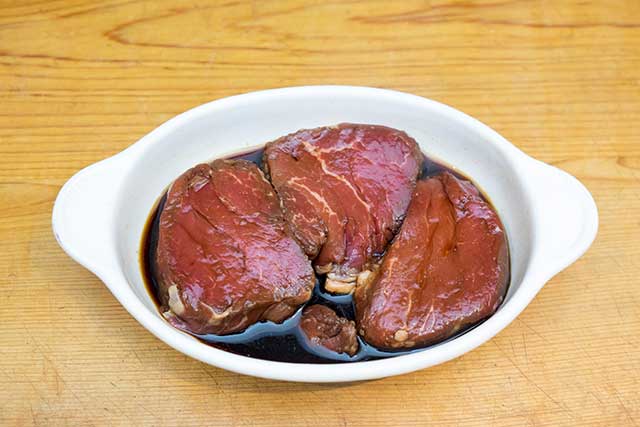
Can’t afford a prime premium cut of ribeye?
No problem; cheaper cuts of steak can taste great too. For this purpose, marinating your meat provides a massive helping hand.
Firstly, a good marinade has two functions;
- Tenderizing: the marinade should include ingredients that tenderize the steak to give it soft and delicious qualities.
- Adding flavor: tenderizing meat is no good if the marinade tastes terrible. The ingredients should help add flavor to the steak.
Marinade Recipe
The following recipe includes ingredients that add lots of flavors, and they also work as tenderizers;
(For use with approx 1 kg (2 ¼ lbs) of meat)
- ¼ cup (60 ml) extra virgin olive oil
- ¼ cup balsamic vinegar
- ⅙ cup (45 ml) soy sauce
- 2 tbsp red wine
- 1.5 tsp Dijon mustard
- 1 tsp mashed garlic
- 1 tsp mashed ginger
- Salt and pepper to taste
Mix the ingredients in a bowl, add the steak, and ensure the marinade thoroughly coats the meat.
Leave to marinate for at least 3 hours (overnight is possible if this is convenient).
Should you not like any of the above ingredients, there is another tasty steak marinade recipe here.
9) Let the Steak Sit For 5 Minutes Before Serving
Once your steak is ready, the temptation to start eating straightaway is strong.
However, letting the steak sit for around five minutes is a crucial flavor-enhancing step.
For one thing, all the meat juices on the surface of the steak will seep back into the center over these extra minutes of rest.
On the other hand, if you cut the steak straightaway, all these juices will go all over the plate.
10) Use the Best Ingredients You Can Afford
Affordability is often a limiting factor when it comes to good food.
After all, the price for some prime cuts of steak can be a little on the expensive side.
However, if we are aiming for the best possible steak, we should select the highest quality meat our budget allows.
No matter what preparation methods we use, it is difficult to make a tough chuck steak taste anything like a prime ribeye.
The quality of salt can significantly vary too, and some proper kosher salt with thick crystals does a much better job than regular table salt.
Final Thoughts
There are lots of different ways to cook steak, and most people have their preferred style.
However, if you’re not doing them already, implementing some of these tips can significantly enhance the steak’s flavor.
Lastly, choosing the right cut of steak is important.
Whether the beef is grass-fed or grain-fed can also have a significant impact on the taste and texture.

